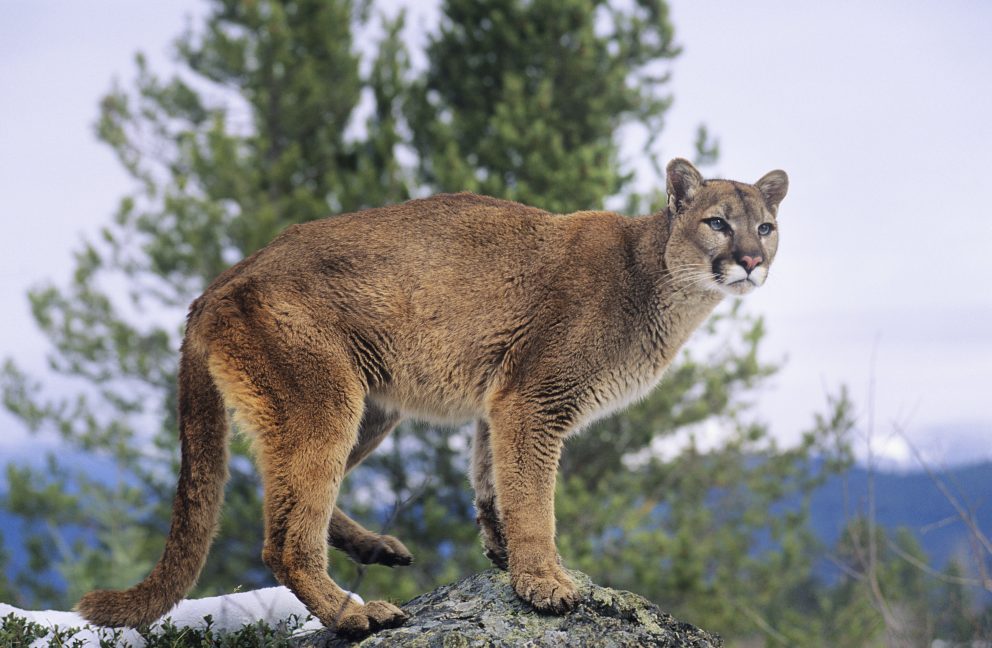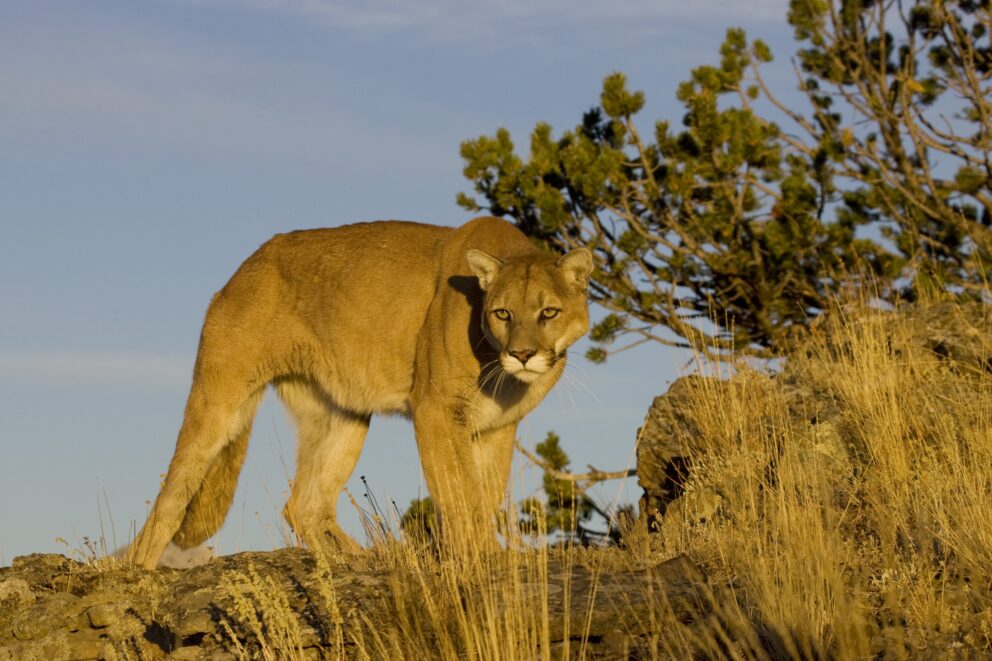- SCIENTIFIC NAME
- Puma concolor
- CLASSIFICATION
- Mammal
- LIFE SPAN
- 12-15 Years
- SIZE
- 34-61” | 64-264lbs
- STATE CONSERVATION STATUS
-
- State Protected
- FEDERAL CONSERVATION STATUS
- Least Concern
- GAME STATUS
- Game
- GAME TYPE
- Big Game
- Washoe
- Humboldt
- Pershing
- Churchill
- Mineral
- Lyon
- Douglas
- Carson City
- Storey
- Elko
- Lander
- Eureka
- White Pine
- Esmeralda
- Nye
- Lincoln
- Clark
Habitat & Range
Mountain Lions are adapted to a wide variety of habitats and environmental conditions found throughout Nevada. They prefer dense cover or rocky, rugged terrain, and also occur in low desert areas. In Nevada, Mountain Lion habitat is commonly associated with pinyon pine, juniper, and mountain mahogany.
- Cold desert shrubland and sagebrush
- Grasslands
- Upland Forests
Threats
- Drought
- Habitat Loss
Natural History
Mountain Lions are carnivores who depend on meat for their survival. Their prey ranges from large game like mule deer and klk to small game like porcupines, coyotes, and rabbits. As ambush predators, Mountain Lions quietly stalk their prey or wait for it to get close to them before leaping onto the prey item. Mountain Lions will cache their prey under leaves or debris and come back to eat it at a later time. They are important predators in their habitats and help to control the populations of large ungulates like elk, deer, and pronghorn. Mountain Lions are solitary animals with large home ranges. Females have home ranges of nearly 90 square miles, while males have home ranges of nearly 175 square miles! Breeding can occur at any time during the year, but most kittens in Nevada are born in June and July.
Fun Facts














